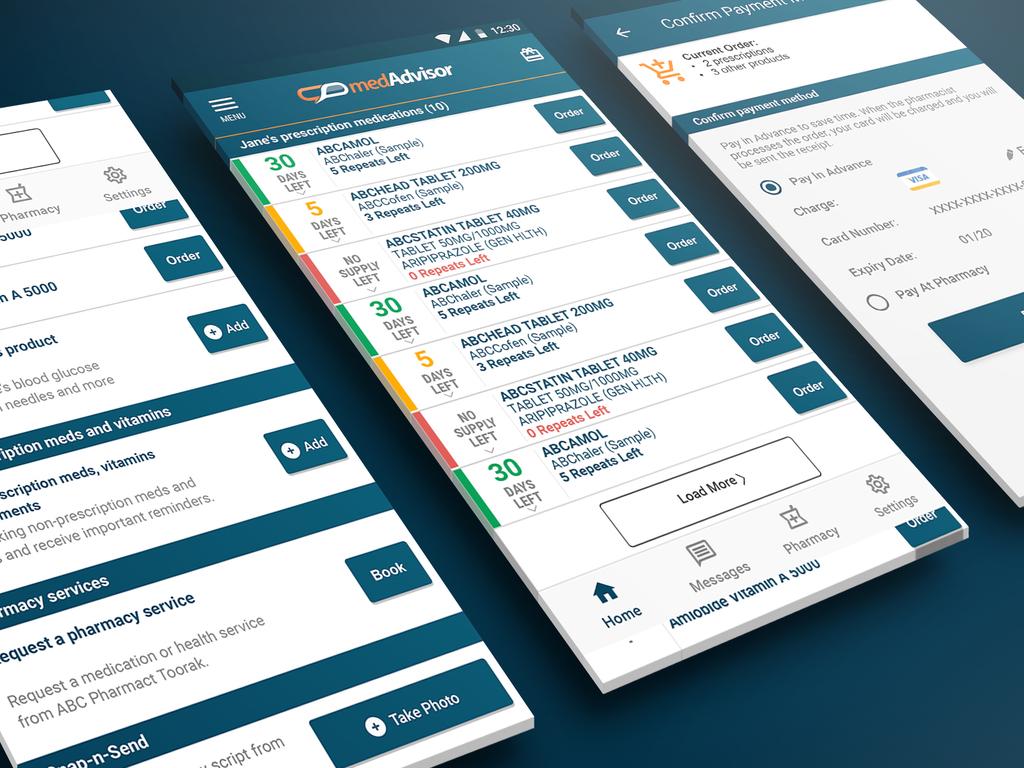Prepare for change when you visit the doctor next year. The practice of being issued a physical medicine script as you leave the surgery is being wound back. Instead, scripts are going paperless and it will change the way that medicines are accessed across Australia.
Your doctor will create a digital script and upload it to the cloud. Your pharmacist will download your prescription and dispense it.
This has lots of advantages. With the new system, the age-old problem of losing your paper script will vanish. There’s the opportunity for third-party app developers to help you manage your medicines on your phone. Where appropriate you can obtain a script from your doctor over the internet, and get it filled and delivered without leaving home.
It’s not compulsory. If this is all too much, you can stick with paper scripts. But before you get too nostalgic for paper scripts, think back to when doctors scratched them down with poor handwriting — in Latin — leaving us at risk of getting the wrong drug or dose.
The new system is scheduled to be tested early next year before a more general rollout later in the year. It’s the second part of a two-stage revolution in prescription dispensing.
Barcodes were introduced more than a decade ago, letting pharmacists retrieve script details from the cloud. However, patients still had to present the physical script to chemists as a legal document. That will no longer apply. The federal government made electronic scripts legal from October 31.
The government has allocated $15.3m for electronic prescribing. Two companies, FredIT Group and MediSecure Group, are competing to provide the cloud for this system, known as the prescription exchange, which pharmacies use to access prescriptions.
Fred IT Group is 35 per cent owned by the Pharmacy Guild of Australia and 50 per cent by Telstra Health. MediSecure Group is funded privately. “We are in a competitive landscape at the same time we’re part of the delivery of e-prescribing, so we’re actually working in partnership as well. We’re friendly competitors,” says David Freemantle, general manager e-health at Fred IT.
He says Fred IT aims to run low volume trials of paperless scripts around February, March with the first trial in Tasmania, and “ramp up” delivery the following quarter.
He says there‘s lots of work to do. Doctors and pharmacists have to become complaint to deal in electronic scripts. The changes to pharmacy operations is significant; they can no longer reply on a pile of scripts to decide which order to process scripts, they’ll be getting prescription request in person, via text messages, email and apps.
He says that with the current barcode system, 5200 pharmacies and 25,000 doctors use Fred IT’s existing electronic prescribing software and about 50 per cent of pharmacies use the company’s prescription dispensing software.
He says that to protect patient confidentiality, pharmacists must know the script barcode to fetch it from the cloud. “When they scan that barcode, which is an alphanumeric number, it goes up to the prescription exchange and it (the software) grabs the script with that number, pulls it down and decrypts its into the dispensing system.”
MediSecure general manager Paul Frosdick says there are two models of paperless scripts. One is a token like a barcode or a digital wallet on your phone that you present at the pharmacy. Alternatively, it could be sent to you by email as a QR code that you print out. The other model involves turning up at the pharmacy to validate yourself.
“(Patients) would have to consent to the pharmacist accessing their script list,” Frosdick says. “I don’t think those mechanisms have been technically sorted out.”
He predicts that both options will be implemented. He acknowledges that some patients will stick with paper scripts, but argues the change “stops the patient being a messenger”.
“It starts to actually make the healthcare system genuinely patient-focused,” Frosdick says,
He sees particular benefits for telehealth consultations. “Somebody can engage from the point of having a conversation with a physician all the way through to having medications dispensed, and put into their hand without them ever having to physically leave home.”
This will assist disabled patients. “They can route that script to the pharmacy of their choice and the pharmacy can deliver the medication to their home.”
Shane Jackson, former chief executive of the Pharmaceutical Society of Australia, says the new platform should offer more convenience and an increased capacity to tackle medicine safety as systems become linked.

One issue is ensuring patients don’t shop around for multiple scripts of the one drug and then overuse them. Jackson says the barcode system already can do that, but paperless or digital scripts will go further. Third-party apps will help consumers manage their prescriptions electronically.
“Everybody has had an experience where they’ve been travelling and they’ve left their hard-copy prescription at home; we shouldn’t have those examples any more,” Jackson says.
“Doctors don’t have to reissue prescriptions because they’re being lost. Pharmacists don’t have to spend time contacting doctors for lost prescription, so it’s going to be a huge gain.”
He says patients can choose whether their digital prescriptions are recorded in their My Health Record. Community pharmacists will find it easier to manage prescriptions of older people who rely on them and take multiple medicines. Apps also can help consumers assess drug interactions.
App developers are gearing up for this change. MedAdvisor, which provides mobile and web apps for managing multiple medications and family members, sees demand for its apps rapidly increasing as more people opt into digital medicine management.
MedAdvisor sells its software to pharmacies, which then offer it free to patients. Chief executive Robert Read says the app helps people understand their medications, when to take them and how to take them, and to reorder them.
Only about 10 per cent of the population access the app through pharmacies. Read expects that to increase with paperless scripts. “We have 1.2 million patients connected to MedAdvisor through about 60 per cent of Australia’s pharmacies. They are of all ages and 30 per cent of our users are over 60,” says Read.
“There are more than 50 per cent of Australians with a chronic disease, so it’s a lot of people with scripts.
“We’re looking for pharmacy to really step up their engagement digitally with their customer base.
“There’s a lot of paper flying around the system that is potentially removed through this.
“It does also probably herald the introduction of online pharmacy in a bigger way in Australia than we’ve seen in the past. In other countries, up to 20 per cent of the market is heading towards online pharmacies.”
Australian Medical Association spokesman Chris Moy doesn’t see issues in doctors adopting paperless scripts. It’s a matter of ensuring the technology involved is working, he says.
He says around 10 different software packages used by GPs will have to liaise with 2 or 3 different systems used in pharmacies. “It’s contingent upon a whole lot of different types of software run by all different companies working together. But there’s really a lot of advantages.”
Published in The Australian newspaper





